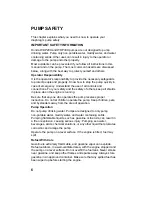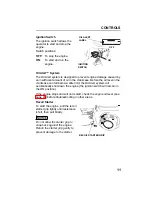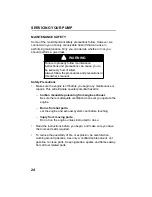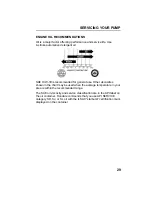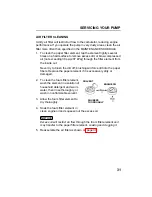
OPERATION
18
PUMP PREPARATION
Suction Hose Connection
Use a commercially available hose, hose connector, and hose clamps.
The hose must be the same size or larger than the suction port. To
prevent the hose from collapsing, use a hose that is reinforced with a
noncollapsible wall or braided wire construction. Keep the pump as
close as possible to the pumping liquid. Avoid hose bends and sharp
turns. Pump performance is best when the pump is not far above the
liquid level and the hose is kept straight. Self-priming time is also
proportional to the suction hose length. Using a longer suction hose
will increase the self-priming time.
Tighten the hose connector to the suction hose with a hose clamp to
prevent air leakage and loss of suction. Verify that the connector
sealing washer is installed and in good condition. A loosely connected
suction hose will reduce pump performance and self-priming ability.
The strainer provided with the pump should be attached to the end of
the suction hose as shown.
Always install the strainer on the end of the suction hose before
pumping. The strainer will prevent debris from entering the pump that
can cause clogging, diaphragm and/or other pump damage.
SEALING
WASHER
SUCTION HOSE
(COMMERCIALLY
AVAILABLE)
STRAINER
(PROVIDED
WITH THE PUMP)
COUPLING
HOSE CLAMP
(COMMERCIALLY
AVAILABLE)
DISCHARGE
HOSE



